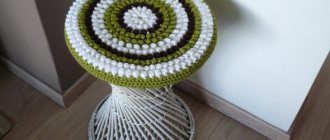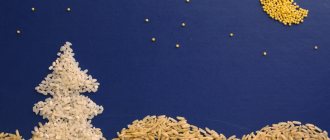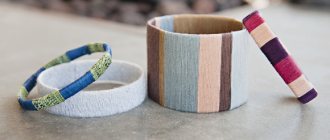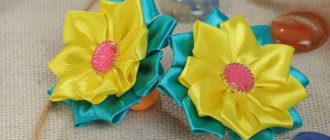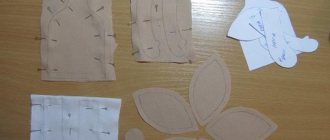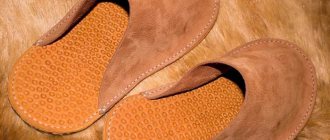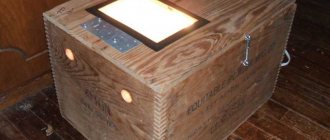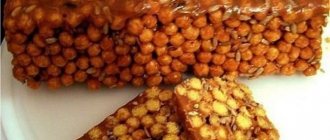DIY autumn ekibana crafts made from natural materials.
Ekibana is the traditional Japanese art of making flower bouquets. Translated into Russian, this word, incomprehensible to us, means flowers that live. As a rule, the Japanese use exclusively live and, if possible, freshly cut flowers to create their floral sculptures.
But since we live in a country where it is not possible to grow fresh flowers all year round, our ekibana has been slightly transformed. In the autumn-winter period, florists and simply lovers of beautiful floral objects make it from all kinds of available materials. In addition to dried flowers and herbs, our people use chestnuts, autumn fruits and even rowan.
We make DIY ekibana from leaves for children on the theme of autumn
Autumn is a great time to experiment and use the objects around us.
If you are a beginner or an experienced needlewoman, a very creative person, or you are a lover of decorating the interior with unusual things, or just a parent, this time of year is for you. During the autumn leaf fall, it is very important to try yourself in creating such a masterpiece as an ekibana from leaves with your own hands. If in the summer it is much easier to find varied and colorful materials for ekibana, then in the fall it is a little more difficult. However, don't be discouraged! Take a closer look; all kinds of tree leaves, dried flower branches, rowan berries, vegetables, pine cones, acorns and much, much more are perfect for creating ekibana! You can involve your kids in the search for materials for your autumn composition. This will be a fun, useful and educational activity for children! In the process of collecting and working with natural materials, children develop fine motor skills, and subsequently speech, imagination, and sensory abilities.
You can make many unusual crafts from natural materials: herbariums, ekibans, flower arrangements, children's appliques and much more. All this will be an excellent decoration for your home, adding its own zest and comfort to it.
Preparation of materials
In any case, it is very important to properly prepare the source material. In order for the ekibana of autumn leaves to look beautiful, you need to choose only whole and healthy leaves
You need to dry the leaves between the pages of a book or album, pressing them down with a weight. This must be done in order to avoid curling of the leaves in the future. Autumn leaves prepared in this way are used for children's applications, leaf collages, and also for herbariums.
Volumetric compositions
If there is a need to make a volumetric composition, autumn leaves are soaked for three to four days in a solution of glycerin (200 ml) and cold water (400 ml). When treated with this method, autumn leaves become flexible, pliable and do not lose their original beautiful appearance.
Flat crafts
There are four ways to dry leaves for flat crafts:
- Natural method. The collected natural materials are tied into bundles and hung on a thread in a dry, well-ventilated area.
- Hot iron drying. Autumn leaves are laid out on thick cardboard, thin paper is placed on top and carefully ironed with a hot iron. It is necessary to iron until the moisture from the leaves has completely evaporated.
- Volumetric drying. With this method, autumn flowers best retain their shape and volume. The flower is cut and placed in dried and calcined sand for one month.
- Oven drying method. It is necessary to set the oven at a very low temperature, about 60 degrees Celsius. The prepared natural raw materials are laid out on a base and slowly dried. You should always monitor the condition of the leaves and flowers to prevent them from darkening or losing their shape.
Let's try to make such an unusual bouquet of roses from autumn leaves with our own hands, like in this photo
- Approximately 30-40 maple leaves of different colors and sizes
- Scotch
- Ribbon for decoration, beads, berries
- Vase for a bouquet
We rinse the leaves with water, do not dry them, but immediately begin working with them.
- The maple leaf needs to be folded in half across the main stem and rolled into a tube.
- We wrap the second leaf around our workpiece, while slightly bending the outer edge of the second sheet
- We repeat the same steps with the third, fourth and fifth leaves. You should end up with a rose that has fully opened its bud. We fix the resulting flower with tape.
- Using the same scheme, we make the desired number of roses.
- We collect the flowers together and make a wrapper around the perimeter of large maple leaves.
- Ekibana can be complemented with a bow or any other decor.
Video selection
At the end of the master class, I suggest watching a video on this topic. As you can see, making a composition of autumn leaves is not at all difficult, and the result will delight you for a long, long time.
Berries for Ekibana
How to make ekibana from leaves with your own hands in the fall? Colorful autumn berries are chosen as decoration: rowan, wild grapes, viburnum, hawthorn and rose hips. They look great in a wreath or candle holder.
Any composition of autumn leaves can be replenished with bunches of rowan berries or other berries, and autumn fruits or nuts can be placed around the vase.
Ikebana Autumn with your own hands
Ikebana is usually made from natural materials: dry and fresh flowers, leaves, branches. It is very unusual to make ikebana from tree leaves and vegetables (cabbage, parsley, celery). Ikebana will turn out to be unexpected and interesting if you use autumn berries and fruits planted on branches. From the article you will learn: the basic rules for creating ikebana and how to make autumn ikebana with your own hands.
Rules for drawing up ikebana
When composing ikebana, you must remember that ikebana is not a bouquet; it does not tolerate pomp. Ikebana is based on three symbolic elements: shin (sky), soe (man), hikae (earth).
Ikebana is built according to the following rules:
1. All elements are installed asymmetrically, forming a triangle, and the elements must be in different planes.
2. The ikebana vessel must match the plant material used, be plain and without a pattern. Rough ceramics are suitable for heavy flowers and large branches; wildflowers look good in earthenware or wooden vessels and in wicker baskets; for roses, tulips, carnations and lilies of the valley - glass or porcelain vases. You can use any objects you like as a “vase”.
3. The proportions of the three main elements are predetermined by the size of the vessel: the length of the stem of the first element - palate (syn) - is equal to the sum of the length of the diameter and the height of the vessel multiplied by 1.5.
4. Correlation and arrangement of symbol elements:
- man (soe) should be equal to 2/3 of the sky element (sin), and they are inclined to one side;
- the branch of the earth element (hikae) should be 2/3 of the length of the person (soe) and placed in front or slightly shifted in the opposite direction from the other two elements;
- all elements are fixed in ikebana so that they appear to be branches of one plant.
5. The branches in the vessel are always fixed at one of four points: right, left, front, back. To do this, use a special device for fixing flowers - kenzan or piaflor (porous sponge); if they are not available, then use plasticine or a plastic bag filled with expanded clay.
6. After the location of the main elements, the space is filled with plant material of the second degree of significance.
Master class: do-it-yourself ikebana “Autumn”
- 2 branches of cymbidium orchid;
- "tingi" branches;
- tall narrow vase 30 cm high;
- glass balls;
- pruner, scissors.
- Fill the vase halfway with glass balls.
- As a hikae, we take a strong branch of a cymbidium orchid, about 50 cm high, with a slight bend to the left.
- Place the hikae in the vase so that the base of the stem touches the bottom of the vase, and tilt the branch to the left by 15°.
- As a syn, we take an orchid branch with a stem of almost 60 cm and also place it at an angle of 15°, tilting it to the right side.
- We place the “tingi” branch in the vase almost parallel to the sin, and tilt it slightly back to the left, behind the hikae.
Ikebana “Autumn” is ready.
Master class: do-it-yourself autumn ikebana from nature’s gifts
- mini pumpkin;
- branched beautiful branch without leaves;
- rowan sprigs;
- cones;
- dried leaves;
- chestnuts;
- heat gun;
- gloss for leaves of indoor plants.
- We cut off the bottom of the pumpkin evenly, make a small hole in the top and, if possible, clean the pumpkin of seeds.
- We glue the cones with a heat gun to the ends of the branches of the main branch;
- We insert and secure the main branch into the pumpkin, and decorate the top hole of the pumpkin with rowan branches.
- Glue the dried leaves and small branches of rowan in several places onto the main branch.
- To add freshness to the composition, we treat it with glitter for indoor plants.
- To create a complete composition, we lay out a carpet of leaves and chestnuts on the table, and place our ikebana on top. Our autumn ikebana is ready.
Arranging ikebana is an art that takes a long time to learn in Japan. Try, experiment and you will definitely succeed.
Secrets of composing compositions in Japanese styles
Despite the fact that in ancient times ikebana arrangements were made only from fresh flowers, modern compositions include dried flowers, gifts of nature (tree branches, stones, roots), as well as decorative elements. One of the main conditions for a beautiful composition is the combination of a vase or other vessel with what will be inside it. If the flower sketch is too large, then the vase must be strong and support it.
Features of art
Composition in autumn style
Before you start making ekiban, you should get acquainted with the features of this type of art . Recommendations:
rigor and conciseness are the basic principles when composing combinations; you should pay special attention to the location of the main components; during work, materials are placed on the right, and the container is at eye level; live and dry gifts of flora are used, as well as trees, branches, berries, fruits; the main material is living gifts of flora, which have an individual philosophical sound, which must be taken into account when compiling.
Vases
By the word "vase" the Japanese mean any vessel. The only requirement for it will be harmony in relation to the composition being composed.
The following are used as vases:
- wooden, porcelain, earthenware vessels:
- wicker baskets;
- rough ceramics;
- light glass vase.
When selecting a container, special attention is paid to the stability of the composition in the container. For low vessels, the bottom is often lined with kezan: a metal surface with protruding needles. This will help the bouquet stay in the correct place and not fall apart.
Compositions from autumn materials
However, you should not limit yourself to mountain ash. Autumn fruits are very rich and varied. These are chestnuts, acorns, cones, viburnum branches and oddly shaped seed boxes, as well as late apples, pumpkins, autumn flowers and strange leaves. They can be found in the forest, on a personal plot, in a garden, in every park or square.
Editorial “So Simple!” I have prepared for you 21 bright compositions using the gifts of autumn. Create a sunny mood. Just can't take your eyes off!
- Such a magnificent multi-layered wreath using dry lavender, various greens, apples and decorative pumpkins can decorate not only the doors, but also the windowsill of a country house.
And here is one of the simple but quite elegant compositions using rowan fruits.
Fire is a fascinating element, especially pleasant to watch on cold autumn evenings. And if there is no fireplace in your home, you can use such an unusual and cozy candlestick made from natural materials as a symbol of the hearth. Would you like to have one of these in your living room?
I simply admire this composition with its extraordinary approach. Perhaps I’ll take it into service!
Amazing magnificence!
Who said that autumn floristry is only wreaths on the door and bouquets of flowers in pumpkins? How do you like this autumn cake made from natural materials? Surprise your guests with such unusual decor.
Physalis wreath to decorate the front door.
Pumpkin is better than any other fruit for creating autumn compositions. This type of ikebana is easy to do and, most importantly, looks very impressive.
If desired, it can be additionally decorated with flowers or simply decorated with very delicate and beautiful carvings. I also suggest that you familiarize yourself with interesting pumpkin compositions.
Topiary is an almost eternal bouquet that is very easy to make with your own hands. Such a berry tree will elegantly complement the interior and add comfort and warmth to the house.
Another wonderful wreath using rowan fruits.
Making a rose
An interesting activity would be to build a do-it-yourself ekibana from leaves in the fall for schoolchildren. First, a bud is formed from the core. To do this, take the first piece of paper and bend it halfway with the front side out. Roll a medium-thick roll from the bent leaf - the core of the future rose. Then they take another leaf and bend the top, which protrudes beyond the bud. Wrap the core of the future rose with this leaf, twisting and pinching from below first one, and then the second half of the leaf. In the same way, apply the remaining petals to the bud one by one. It is better to choose the leaves of the same shade, but an original contrasting flower will also look beautiful. Shape the rose petals until it becomes quite fluffy. For a completed flower you will need 5-6 leaves. Carefully pierce the base of the bud with a twig and wrap it with threads to secure the flower. Then wrap the twig with green tape. This way you get a beautiful rose on a stem. The rest of the roses are made exactly according to this pattern. The bouquet can be decorated with colorful bright leaves of various shapes and shades.
Composition color
In true Japanese ekibana, color denotes deep philosophical meaning. Green embodies spring and the forces of the earth. Red fire represents the color of summer. For the Japanese, white represents autumn—the time of rice ripening. And the low season - winter - is indicated in black. For Europeans, the brightest orange and red shades of nature are associated with autumn. The ekibana made from leaves in the photo (it’s not at all difficult to make it with your own hands) conveys the riot of colors of this time of year.
The ancient language of flowers has been practically forgotten by Europeans. And in Japan, to this day, plants and flowers are strongly associated with everyday life. Pine - eternal youth, peony - prosperity, bamboo - perseverance and spiritual purity, chrysanthemum - joy, iris - courage, plum - a symbol of life overcoming difficulties. And orange flowers are memories. The branch of an apricot tree is associated with female beauty: the eyes of Japanese women are often likened to elongated apricot seeds. A blossoming apple tree branch represents wishes for peace in the family. Jasmine signifies enjoyment of life.
Technical secrets
Technical secrets include a variety of ways to keep plants fresh. The ends of branches and stems are cut under water, split, dipped in boiling water and even burned. The next step is to secure the elements of the composition in the vessel. The main fastening tool is considered to be a kenzan - a metal stand with protruding needles, between which branches and large leaves are fixed. To prevent the leaves from curling into a tube when they dry, they must first be placed between paper sheets and dried with an iron. After this procedure, the leaves become more fragile, but do not lose their shape.
Craftswomen who have repeatedly made original ekibans from leaves with their own hands in the fall advise treating the finished flowers with vegetable oil, which soaks them in for two days, which allows the buds not to lose color and shape. It is also recommended to cover the bouquets with hairspray to protect them from early drying. To prevent the leaves from falling off, add glycerin to the water: 1 part to 2 parts water. At the same time, the branches will delight you much longer or will preserve the brightness of the colors and texture of the leaves until spring.
How to make autumn ekibana from leaves preparation and flat composition
Butterfly made from leaves Mouse made from leaves Birds made from leaves
House made of leaves Picture made of leaves
Flat ekibana is an ideal option for schools and kindergartens. Some florists also call it foliage paintings and panels. Since in this case the leaves are attached to a dense base, all that will be required of you is to give them the correct shape and form certain shapes. If you wish, you can very quickly make a beautiful and airy butterfly, a small mouse, flowers from autumn leaves, or lay out a beautiful clearing.
But in order for you to get all these pictures, first you will need to prepare the decorative material. And if for a volumetric composition the leaves must be flexible, then for flat ones they must be as dry and even as possible. In view of this, all collected material will need to be properly dried.
So:
- The easiest way is to simply collect leaves of different shapes, tie them in small bunches and hang them to dry in a room with good ventilation. True, you must understand that in this case, when drying, the leaves will curl and will not be smooth and beautiful.
- If you want to get the smoothest possible material, then you can dry it with an iron. To do this, you will need to take a leaf, place it between two sheets of cardboard and iron it with an iron. This manipulation will need to be continued until all the moisture has evaporated from the material.
- If you have time, then put the leaves in a book and put it under a press. Open it periodically and let the moisture accumulated in it evaporate. If you are patient, you will eventually get a material that will retain both its color and its structure.
What is Ekibana?
Ekibana is the Japanese art of connecting and arranging flowers and shoots. The essence of this art is to emphasize the beauty of living plants, their momentary freshness, the breath of their short life. In Japanese, the character for "flower" means "that which grows on the earth, lives and dies." The beauty of both the capricious beauty of the rose and the modest field bindweed lies in the transience and evanescence of their beauty.
The task of the Ekibana master is not only to construct an original composition, but also to convey in it the most colorful way his own thoughts about human life and the essence of existence. That’s why ekibans don’t have names: everyone can see in them what suits their mood.
Jiyuka
Freedom of style is manifested in the originality of the choice of material; this is a kind of surrealism of ikebana made from natural materials. It combines the ancient art of bouquet arranging with the modern eye of an artist. Here, any modification of the shape of the leaves, the addition of materials, both natural and inanimate, is possible. Dry herbs and leaves, fruits, glass and stones, and plastic are often used. An unusual shape of the vessels in which the masterpiece is created is also chosen.
The free style of bouquets allows for the use of mixing other styles. Plant materials from the surrounding nature can be used, geometric symbolism and color mixtures are added. Modern textured materials allow the imagination of artists to run wild, embodying the most reckless ideas.
The Jiyuka style can create countless looks by combining plant and man-made materials.
Let's make ikebana “Gift” in a step-by-step master class
This ikebana uses a candle as the base. If you are not going to light it, then you can take a not very long one for decorative purposes. If you want to light it, you should choose a long candle for safety reasons.
To create such a composition you will need the following materials:
- Decorative satin ribbon;
- Decorative organza ribbon;
- Fir or pine cones;
- Thick wax candle;
- Golden foil;
- Plaid material;
- Raffia;
- Thin floral wire;
- Artificial carnations;
- Fir branches;
- Tennis balls;
- New Year's Christmas balls of small diameter.
You need to make a loop from the wire and insert a tennis ball into it. After this, you should tighten the loop a little so that the ball stays well in it and does not fall out.
The ball should be wrapped in gold foil and decorated with organza and raffia. You can make spirals from organza and attach them at the base of the ball. Next you should decorate the ball with a chiffon ribbon.
Floral flasks need to be attached to the wax candle. An ordinary stationery eraser does this perfectly. You need to use exactly as many cones as the girth of the wax candle allows. If the candle is not wide enough and there are clearly few cones, then using a second elastic band you can add a second row.
Carefully insert spruce branches into the test tubes. You don't need to use all the flasks; they will be needed for the flowers. Branches should be chosen of medium size so that the composition looks neat.
Fill the checkered fabric with cotton wool and tie the base with raffia. This will create a bag into which you need to insert a candle.
The cloves must be trimmed so that a small short stem remains. Insert cut carnation flowers into free cones.
Using floral wire, you need to decorate the composition with cones and spruce balls.
This way you can create unique decorations and gifts from branches. And with a large selection of materials, you can make truly New Year's products.
Crafts on the theme of autumn Ekibana
But, what’s most interesting: a little later, at 2304 x 3072 · 1075 kB · jpeg Source
Autumn crafts for kindergarten with your own 500 x 667 · 130 kB · jpeg Source
DIY crafts. Autumn. Except 571 x 470 · 54 kB · jpeg Source
Craft “Autumn has come” 454 x 605 · 50 kB · jpeg Source
Decorating ideas for fall and crafts with maple leaves for making a 500 x 373 · 65 kB · jpeg Source
DIY autumn crafts: “Tree 603 x 504 · 34 kB · jpeg Source
DIY crafts! (piggy bank super 510 x 340 · 48 kB · jpeg Source
Autumn. Crafts from nature 500 x 389 · 72 kB · jpeg Source
DIY seed crafts 520 x 381 · 44 kB · jpeg Source
Crafts from vegetables and fruits 744 x 679 · 73 kB · jpeg Source
Article on the topic of how to make crafts from 641 x 530 · 84 kB · jpeg Source
Dry bouquets of leaves / Master classes 520 x 389 · 46 kB · jpeg Source
From colorful leaves you can collect 640 x 470 · 125 kB · jpeg Source
DIY Ekibana autumn pictures 746 x 617 · 48 kB · jpeg Source
Taller de elaboracion de animales con hojas y castanas | Lengua de 500 x 465 · 88 kB · jpeg Source
Red leaves are a real decoration 480 x 526 · 37 kB · jpeg Source
Children's crafts from nature and 720 x 669 · 117 kB · jpeg Source
Craft product Autumn Festival Modeling 520 x 390 · 52 kB · jpeg Source
This photo is also in the archives 600 x 609 · 104 kB · jpeg Source
Volumetric paper craft traffic light 500 x 616 · 229 kB · jpeg Source
Let's try to preserve the beauty of a woman's 500 x 400 · 76 kB · jpeg Source
Ekibana crafts - House plants 375 x 500 · 31 kB · jpeg Source
Autumn ideas for creativity with yours 520 x 381 · 391 kB · png Source
How to make a bar with your own hands (35 photos) 640 x 466 · 49 kB · jpeg Source
959331Fa42a0 – Crafts for kindergarten with your own 500 x 375 · 34 kB · jpeg Source
DIY autumn crafts for 504 x 521 · 46 kB · jpeg Source
Christmas tree craft: crafts 600 x 524 · 26 kB · jpeg Source
Autumn ball at school or holiday 657 x 484 · 80 kB · jpeg Source
From dirt at home, Only 417 x 512 · 162 kB · jpeg Source
My hobby is a variety of crafts from 600 x 449 · 47 kB · jpeg Source
How it looks! Ekibana is not necessary 525 x 700 · 74 kB · jpeg Source
My favorite city crafts - Cities 336 x 508 · 93 kB · jpeg Source
DIY autumn crafts for 600 x 450 · 66 kB · jpeg Source
out of 10. Ratings: 117.
Autumn ekibana made from fresh flowers
Autumn ekibana Floral composition with leaves Autumn motifs
A little higher, we already told you that ekibana is, first of all, harmony, so when choosing material for this autumn object, give preference to flowers that bloom at this time of year.
The best option in this case would be asters and chrysanthemums. And in order for others to understand that you have created an autumn composition, you can supplement it with leaves, grass and interestingly shaped branches that have already changed color.
Yes, and when composing an ekibana, remember that it is advisable to place the brightest and most massive flowers in the center of the composition, this way you will create a point that attracts the eye, but at the same time does not distract from all the other elements of the man-made object.
So:
- At the initial stage, think about what your ekibana will ultimately be like, and in accordance with this, select a container for it
- After this, take a special sponge for ekibana and adjust its size to the selected container
- Place the sponge in a container and fill it with liquid, which will prolong the life of living flowers
- In the next step, start preparing the flowers (cut their stems at an acute angle)
- After this, carefully stick them into the sponge and try to immediately give them the desired slope
- Fill empty spaces with leaves, grass and branches
Wall panel
To create a wall ikebana, you need to glue a piece of burlap or other dense material onto a rigid base. Then twigs, flowers, dried flowers, leaves, pieces of moss and other selected elements are placed on the canvas. It is important to think through the image of the panel so that the composition is complete.
After the glue has completely dried, the ikebana can be fixed on a horizontal plane.
To create a unique beautiful composition, it is worth watching an ikebana master class, which can easily be found on the Internet.
We make ekibana from leaves for children
Japan is considered to be the birthplace of Ekibana. Ekibana is a technique for making bouquets from natural materials. Many doctors and psychologists claim that such decorations in the home have a very positive effect on a person’s condition. Also, making ekibana very well develops creative thinking and imagination. Today we will make an ekibana from leaves with our own hands.
Ekibana, as a decoration, stands out for its considerable cheapness and beauty. The concept of cost is quite relative in our case, since you can buy an expensive vase or other decoration for a bouquet. But you can make a beautiful ekibana without using any expensive materials. But for ekibana, the production of which will cost little money, it will take a lot of time to collect materials: cones, leaves, branches, flowers...
Three basic principles for creating Ekibana
- Any composition should have a central element, it could be, for example, a flower. The central element should stand out strongly against the background of other elements.
- General inclination of the composition. All flowers and other parts of the ekibana should be located at a certain angle of inclination. Many ekiban makers also recommend slightly bending the stems of flowers and branches. This tradition started in Japan. According to the Japanese, such ekibana brings good luck.
- Asymmetry. This is also largely influenced by the traditions of the Japanese, who believe that asymmetrical lines symbolize man, earth and sky.
Practical advice
Ekibana and autumn are two perfectly combined concepts. After all, the entire bouquet is made from the “creations” of autumn: dry leaves, pine cones, twigs, dried herbs. In the photo below you can see an example of an ekibana in which autumn materials were used.
Before you start making ekibana, be sure to think about where the bouquet will be located
It is very important to ensure that the bouquet fits perfectly into the design of the room, otherwise it may not only not bring any benefit, but also cause harm.
Try to place the Ekibana away from sunny windows and radiators. Delicate petals can wither very quickly and the bouquet will completely lose its appearance. But placing such beauty in a dark place is a stupid idea. The best solution would be to place a hidden light source, which will create a very impressive backlight.
After solving all the issues related to lighting and location of the bouquet, you can begin to choose the shape of your bouquet and its color scheme. This is not so difficult to do, just understand what kind of ekibana you want and, based on the interior of the room, make a decision.
The next step is to select materials. The Japanese, for example, have always given preferences depending on the season. And this is easy to explain: at the time in which this art was born, there were no synthetic fibers or other scientific achievements. Therefore, for ekibana they used what could be found on the street at the moment.
We can recommend materials that are best used in the fall. Perfect for this time of year: chrysanthemums, chestnuts, asters, maple leaves. All these materials are attached to the main bouquet using plasticine or plaster.
Autumn Ekibana
In Japan, the autumn bouquet had a special meaning and received the most attention. Here is an example of such a bouquet.
This bouquet can perfectly decorate a room for children. The best time to make an autumn bouquet was considered to be the beginning of April - the end of August. It is at this time that the most different flowers appear: asters, chrysanthemums, dahlias.
You can use a beautiful and original basket made of dried pumpkin as a container for the bouquet. If there are no natural materials, then you can resort to using artificial ones such as foam, glass, plastic. Even orange and grapefruit peels can be perfect for the composition, from which you can make an interesting vase.
People who have a summer house with a garden plot can find an incredible amount of different materials that are perfect for making ekibana. Always remember that making Ekibana requires patience and diligent work. But the time you spend will turn into a wonderful and beautiful decoration that will delight your eyes.
Video
Gifts of Autumn
The components of the autumn composition should be selected depending on the type of ikebana. Let's consider what flowers, fruits and other gifts the golden age gave us.
In autumn, many unusually beautiful and graceful flowers bloom; let’s choose your favorite plant options for the bouquet:
- Chrysanthemums (Oaks).
- Asters.
- Dahlias.
- Rudbeckia hairy.
- Zinnia is elegant.
- Snapdragon.
- Helenium autumn.
- Pansies.
- Marigolds (Tagetis).
- Rhododendron.
- Phloxes.
- Roses.
- Sunflowers.
- Nasturtiums.
In addition to flowers, autumn presents us with many other gifts. For the future bouquet you can prepare: pumpkins, apples, bunches of rowan berries, acorns, chestnuts, elderberry branches, colorful leaves, nuts, pine cones, moss and much more that surrounds us in the autumn forest or on the street.
For creativity, we may need additional tools and materials; we list the main ones that are worth stocking up on for future use:
- imagination and creative impulse;
- PVA glue, super glue, glue gun;
- twine, ribbons, wrapping paper, fabric;
- beads, wire, cardboard;
- scissors, colored paper, stapler, paints;
- floral sponge, baskets
ikebana
Ikebana styles
Ikebana is the oriental art of making flower arrangements. Its name translated into Russian means “to give flowers new life.” Nowadays, this ancient art is known far beyond Japan and is widely used by florists all over the world.
Over the centuries-old history (from about the 6th century), several styles with their own principles, rules and laws arose in the art of ikebana: tatebana, rikka, nageirebana, chabana, shoka and moribana.
Tatebana is the most ancient and revered style of ikebana, which served as the basis for all subsequent development of this art. Floral arrangements in this style were widely used in religious ceremonies. Along with the candlestick and vessel
for incense, they were traditionally placed near the Buddha statue as an offering to the deity and a reminder of the fragility of beauty and the frailty of life.
The main principle of the Tatebana style is the strictly vertical arrangement of plants in a vase. In addition, a strictly odd number of elements in the composition and a symbolic combination of three forces (earth, sky and man) in harmony were established. The last two rules have become the law for all other ikebana styles.
Rikka (standing flowers) is an ikebana style characterized by pomp, officialdom and theatricality. Its appearance was facilitated by the spread of Buddhism in Japan. Religious rituals required symbols and decorations. In accordance with the postulates of rikka, plants directed towards the sky were supposed to personify the greatness of nature and the triumph of the teachings of the Buddha. Rikka are characterized by lush bouquets of large branches in expensive bronze vases. Compositions in this style decorated temples, palaces and rich houses.
Nageirebana or nageire (flowers thrown into water) is a style of ikebana that originated in
Japan as opposed to the strict rikka style. His main idea was the natural arrangement of flowers in a vase with the stems supporting the edges of the vessel. Nageireban compositions could be upright, inclined, recumbent, hanging and wall-mounted. Due to their democracy, they quickly gained popularity among the people of Japan.
Chabana (tea flowers) is a style that appeared in connection with the spread of the tea ceremony. Compositions in this style are intended for installation in a tea pavilion. They symbolize peace of mind.
The shepherd is characterized by minimalism inherent in the Zen philosophy (the big is in the small). Plants should be simple and natural looking. To create a composition, just one type of flower is enough. All plants, like living beings, need to be kept in good shape by providing access to water. The dishes need to be modest, plain, without bright shine.
Since tea ceremonies often take place in the dark, yellow flowers should not be used in the shepherd. In twilight they become difficult to see.
Shoka is a three-color asymmetrical style. It is more difficult than nageiraebana, but not as strict as rikka.
According to Shoka, three branches are placed in a vase so that the lines connecting their tops form a scalene triangle, symbolizing harmony in the universe. The main branch is placed in the center, and the lateral branches are placed on the left and right, tilting back and forth. The central branch is 1.5-3 times higher than the vase, and the side branches are 1.5 and 2 times lower than the central one, respectively. All stems should come out from one place and diverge to the sides at a height of 10 cm from the edge of the vessel, without touching the walls of the vase. Plants cannot intertwine with each other and must be clearly visible in the composition.
Moribana is the youngest style of ikebana, incorporating elements of rikki and nageirebana and formed under the influence of European civilization. Its main feature is the use of low, flat vases, ideal for a modern urban interior. The Moriban arrangement is a natural landscape depicted in miniature. Wildflowers and greenery are perfect for such a composition.
Author of the article: Scientist Agronomist Maxim Stepanov.
Ikebana: An Ancient Art from Japan
Literally, “ikebana” is the art, the skill of arranging flowers. In this case, both fresh flowers and dried dried flowers are used.
When creating bouquets, they adhere to strict commandments, which are based on the experience of great Japanese masters. Before you start creating traditional Japanese ikebana, it is useful to know them:
- To achieve the perfect ikebana, you don’t have to use beautiful flowers. The key to a harmonious bouquet is the correct balance of elements.
- when creating a composition, the time of year and the occasion for which it is created are taken into account;
- You need to start creating a flower bouquet in a great mood, in complete calm and tranquility. Only then will the result of your work truly please you.
- The number of flowers in Japanese ikebana does not matter; there can be an even or odd number.
How to prepare material for autumn ikebana with your own hands
There is a special wonderful period in autumn, when the surrounding nature is painted with bright colors, as if with an artist’s brush. Unfortunately, it is not very long, so you need to hurry to stock up on beautiful natural materials and prepare them for use in various autumn crafts, including those needed for making ikebana. On one of the sunny days of golden autumn, you can go to the nearest forest or park and collect there everything that seems beautiful and interesting: colorful leaves, flowers, herbs, pine cones, acorns, chestnuts, moss, interesting branches, etc. At home, the collected material will need to be prepared properly in order for products made from it to look aesthetically pleasing and delight others for a long time.
Flowers and herbs need to be dried; to do this, hang them upside down in a dry, dark place. After drying, they can be coated with regular hairspray; this procedure will make them brighter and shinier.
In order for the leaves to retain their rich color for a long time and not become deformed, they are soaked for several days in a solution of glycerin and water (ratio of 100 ml to 200 ml), then laid out on paper or a towel and dried well.
In addition to the material for the composition itself, it is necessary to prepare a base, which can be used as ready-made narrow, wide, low, tall vases and stands. A base made of natural material, for example, a vase made of pumpkin, wood, bark, or dry branches, will look original.
The details of the composition at the base are attached using plaster, alabaster, polystyrene foam, and wet sand. In this case, the choice of material depends on the severity of the decorative elements used. For example, if there is a rather heavy branch in ikebana, then it is best to “plant” it in plaster. Light twigs, flowers, herbs will stick well in the sand.
Before you start creating a composition, you should sketch out a sketch of the future ikebana; you don’t need to draw details on it, just present the general idea, and the necessary accents will be added during the work.
Only a few elements can be used in the composition, but with their proper arrangement and harmonious combination, ikebana will look laconic and complete, and according to the Japanese, this is exactly how it should look.
Ekibana laws
The spirit of ekibana is diverse, but each compiler creates a bouquet in his own way. Even in one flower and one branch great nature should be reflected. When creating a bouquet, you need to communicate with the flower in your soul. You should begin to compose a composition with the proper attitude, calmly and carefully. Ekibana is not only a painting, but also music and sculpture. The eyes, hands and heart of the person creating the bouquet should not be held captive by any rules. Ekiban must contain three unchanging elements, meaning three principles. They can be personified by a flower, a branch and grass. According to tradition, the compositions certainly reflect the season. The vessel plays an important role - it should not suppress the composition, but form a single whole with it. There are simple vases made of ceramics and vessels made of metal or plastic that are fancy in shape or color.
History of origin
One legend tells about the emergence of the art of ikebana. One day, a strong hurricane with a thunderstorm swept through Japan, which destroyed everything in its path and destroyed the trees and bushes around. Then the Buddhist monks, laying a branch of a broken tree to the Buddha statue, turned to the Teacher in the hope that he would help restore the destroyed vegetation.
Surprisingly, after a little time, the fragrance of flowers again spread across the devastated territories, the bushes opened their buds, and the gardens bloomed, once again giving beauty to those around them. So Buddhist monks began to often build ikebana trees so that the gardens would never stop blooming.
Historians have widely differing opinions about when the first ikebana appeared. It is generally accepted that it came to Japanese lands from China, and, like the chrysanthemum - a symbol of imperial power - spread throughout the country, more precisely, along its Buddhist side. Initially, the compositions were made by monks, they were used to decorate temples and given to Buddha as an offering.
Later, in the 9th-10th centuries, the compositions went beyond the temples and spread into the homes of ordinary Japanese. Taking on more natural, graceful forms, they became an integral part of the interior and brought with them harmony.
Ikebana at a tea ceremony in ancient Japan
By the 12th-14th centuries, the art was adopted by ascetic samurai, and therefore made it simpler and more modest. Around the same time, the school of Zen Buddhism developed in Japan, so bouquets, symbolizing the path to truth, completely lost any chic, although they remained just as beautiful and symbolic.
Everything changed in the 17th-19th centuries, when ordinary joys and admiration for life itself became the main values in life. The former symbolism in the composition became less important than the feeling of harmony that the ikebana trees of that time gave.
Basic Rules
A simple set of rules will help you quickly master the subtle art of flower arranging. It includes several key points:
- Central element. Do-it-yourself spring or autumn ikebana for children (as well as other compositions) should have its own center, a place that is allocated to only one plant, leaf, or twig.
- Dynamic location. A Japanese bouquet should give the impression of an absolutely living organism. It should not have the severity of bouquets familiar to Russians. On the contrary, they try to place all the elements at an angle to each other, the vessel, the surface where the vase will be installed. Masters are very fond of unusually curved elements, which allow them to more fully convey the emotions of the creator of an elegant creation.
- Asymmetry. Apart from the center, ikebana should not have regular lines or artificially pretentious forms. Japanese art is designed to combine in a bouquet pieces of nature (sky - shin, earth - hikae) and man - soe, who is part of this world. Ideally, bouquet designers strive to achieve three planes that form an irregular triangle.
Before starting to create a composition, a specific place or a specific recipient is selected for it. And this is another difference from traditional bouquets, which can be presented to everyone indiscriminately.
